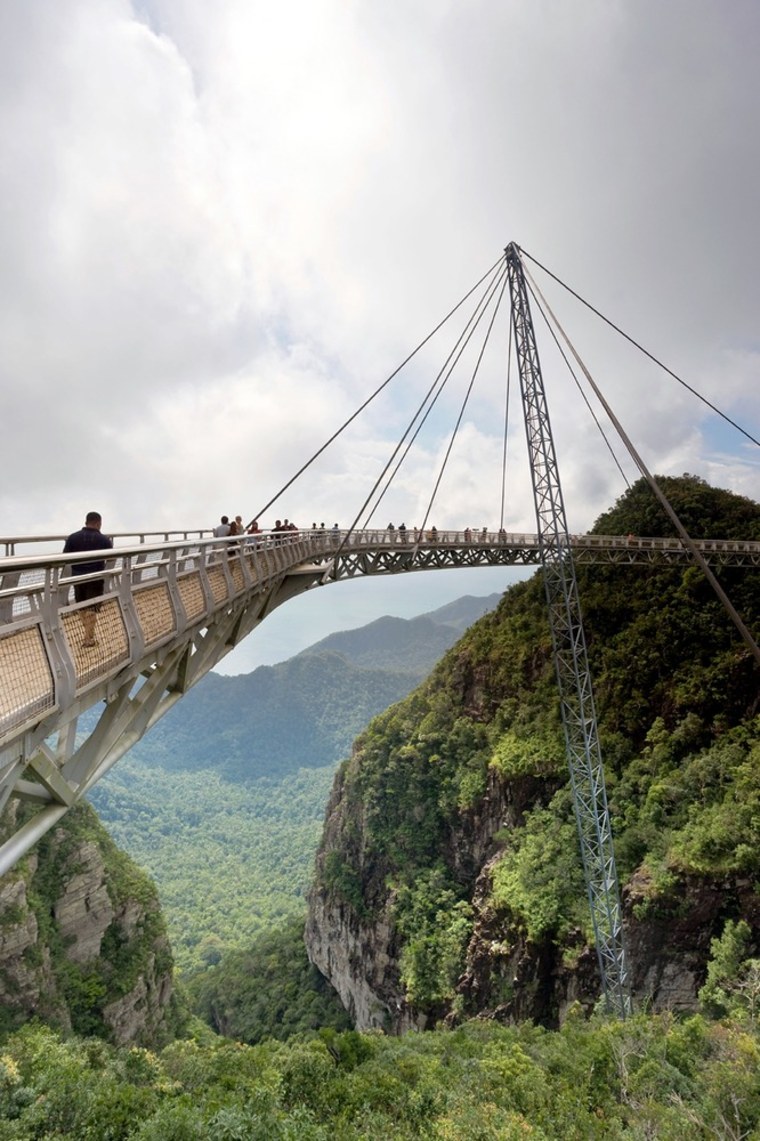Stroll the 1.3-mile Hudson River Walkway in Poughkeepsie, N.Y. — taking in the exhilarating view of water, treetops and sky — and you could almost forget that we live in a world designed for the automobile. Here, the environment belongs not to those who roar by at 70 mph, but to pedestrians like you.
The concept of pedestrian bridges isn't new — Venice's Rialto Bridge dates back to 1588, and even the Brooklyn Bridge architects made room for walkways alongside the car lanes. But just recently, since around the turn of the millennium, we've rediscovered the notion that regular people are important enough to deserve some spectacular feats of engineering.
This latest generation of newly constructed or retrofitted pedestrian bridges — where cars are strictly off-limits — takes a number of forms. Some exist primarily to thrill tourists. You have to take a harrowing cable car ride up a lush Malaysian mountain just to get to the aptly named Langkawi Sky Bridge. It's a curved bridge to nowhere that dangles 2,300 feet above the dazzling Andaman Sea.
Other pedestrian bridges elevate the everyday business of getting from point A to point B. From Buenos Aires to Bilbao, routine errands are imbued with grandeur thanks to Spanish architect Santiago Calatrava's dramatically sculptural footbridges.
The most successful fall somewhere between spectacle and conduit because they blaze a path where no one felt the need for one before. The newly built Bob Kerrey Bridge linking Omaha, Neb., to Council Bluffs, Iowa, surely attracts tourists, but it has also changed life for the locals. Footbridges encourage new patterns of development geared toward human-powered pace, especially along the nearby waterfronts.
That's been the case in upstate New York, where a 17-year grassroots effort to repurpose an industrial railroad bridge as the Hudson River Walkway is now reaping rewards. Since its October 2009 opening, the walkway has spurred a neighborhood revival and attracted more than 750,000 tourists — three times the expected amount.
Sure, these pedestrian bridges make a big impression with sweeping views and innovative features like solar-powered LED lighting or the ability to levitate and roll upwards into a wheel. But above all, they reward us for traveling, whether on foot or two wheels, with our own muscle power.
More from Travel + Leisure
World's coolest new tourist attractions
America's best burger cities
Gas-saving road trip tips
